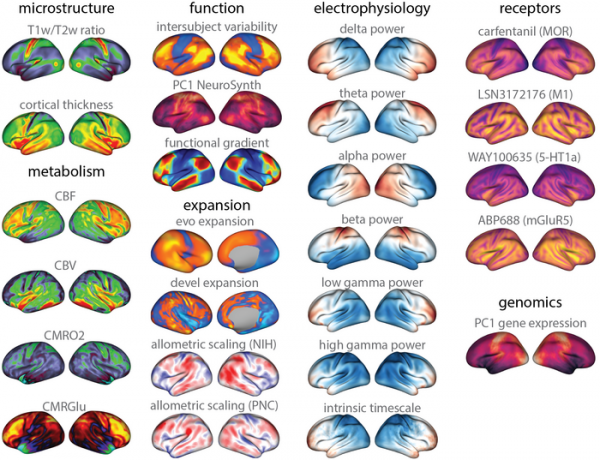Database Provides Open Access to Multiple Brain Maps
 A team from The Neuro, a McGill University research and teaching institute, has brought together more than forty existing brain maps in one place. The database, called neuromaps, will help scientists find correlations between patterns across different brain regions, spatial scales, modalities and brain functions. It provides a standardized space to view each map in comparison to each other, and assesses the statistical significance of these comparisons, to help researchers distinguish a meaningful correlation from a random pattern. The neuromaps database also helps standardize the code across maps, to improve reproducibility of results. The team published their results in the journal Nature Methods and made the data open access on github at https://github.com/netneurolab/neuromaps.
A team from The Neuro, a McGill University research and teaching institute, has brought together more than forty existing brain maps in one place. The database, called neuromaps, will help scientists find correlations between patterns across different brain regions, spatial scales, modalities and brain functions. It provides a standardized space to view each map in comparison to each other, and assesses the statistical significance of these comparisons, to help researchers distinguish a meaningful correlation from a random pattern. The neuromaps database also helps standardize the code across maps, to improve reproducibility of results. The team published their results in the journal Nature Methods and made the data open access on github at https://github.com/netneurolab/neuromaps.
“Ultimately, we hope that neuromaps will add a spark to the analysis of human brain maps and increase accessibility of data and software tools to people with diverse research interests,” says Justine Hansen, the paper’s co-first author. “As the rate at which new brain maps are generated in the field continues to grow, we hope that neuromaps will provide researchers with a set of standardized workflows for better understanding what these data can tell us about the human brain.”
This study was funded with the help of Fonds de Recherche du Quebec – Nature et Technologies (FRQNT), Canadian Open Neuroscience Platform (CONP), Hemlholtz International BigBrain Analytics and Learning Laboratory (HIBALL), Natural Sciences and Engineering Research Council of Canada (NSERC), Canada Research Chairs (CRC), National Institute of Health (NIH), Canadian Institutes of Health Research (CIHR), Healthy Brains for Healthy Lives (HBHL), and Brain Canada Future Leaders (BCF).
